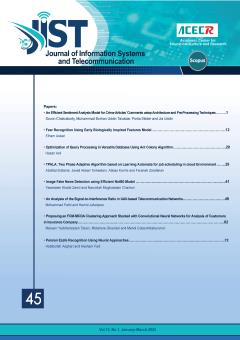People may change their opinions as a consequence of interacting with others. In the literature, this phenomenon is expressed as opinion formation and has a wide range of applications, including predicting social movements, predicting political voting results, and marke
More
People may change their opinions as a consequence of interacting with others. In the literature, this phenomenon is expressed as opinion formation and has a wide range of applications, including predicting social movements, predicting political voting results, and marketing. The interactions could be face-to-face or via online social networks. The social opinion phases are categorized into consensus, majority, and non-majority. In this research, we study phase transitions due to interactions between connected people with various noise levels using agent-based modeling and a computational social science approach. Two essential factors affect opinion formations: the opinion formation model and the network topology. We assumed the social impact model of opinion formation, a discrete binary opinion model, appropriate for both face-to-face and online interactions for opinion formation. For the network topology, scale-free networks have been widely used in many studies to model real social networks, while recent studies have revealed that most social networks fit log-normal distributions, which we considered in this study. Therefore, the main contribution of this study is to consider the log-normal distribution network topology in phase transitions in the social impact model of opinion formation. The results reveal that two parameters affect the phase transition: noise level and segregation. A non-majority phase happens in equilibrium in high enough noise level, regardless of the network topology, and a majority phase happens in equilibrium in lower noise levels. However, the segregation, which depends on the network topology, affects opinion groups’ population. A comparison with the scale-free network topology shows that in the scale-free network, which have a more segregated topology, resistance of segregated opinion groups against opinion change causes a slightly different phase transition at low noise levels. EI (External-Internal) index has been used to measure segregations, which is based on the difference between between-group (External) links and within-group (Internal) links.
Manuscript profile


